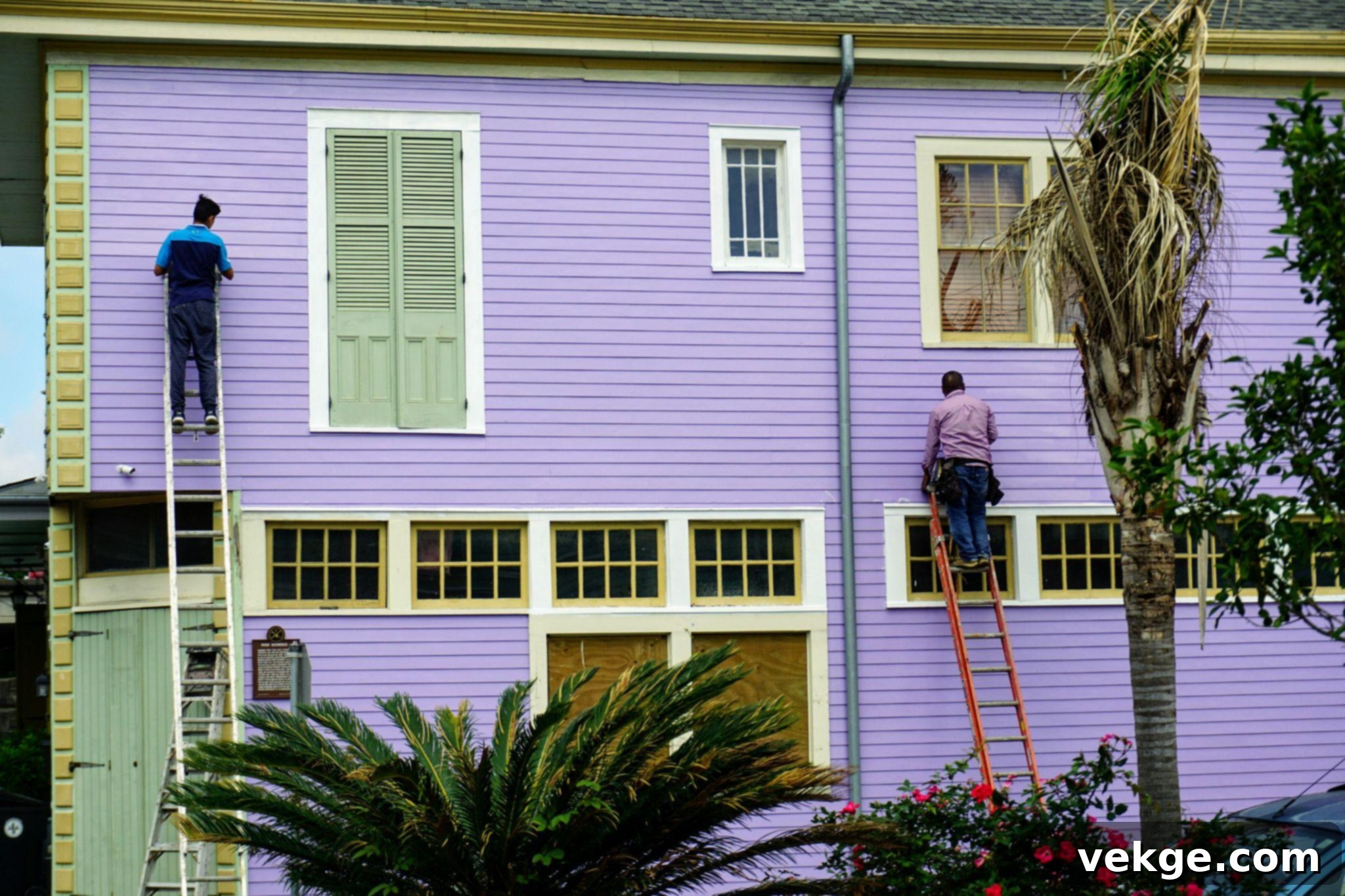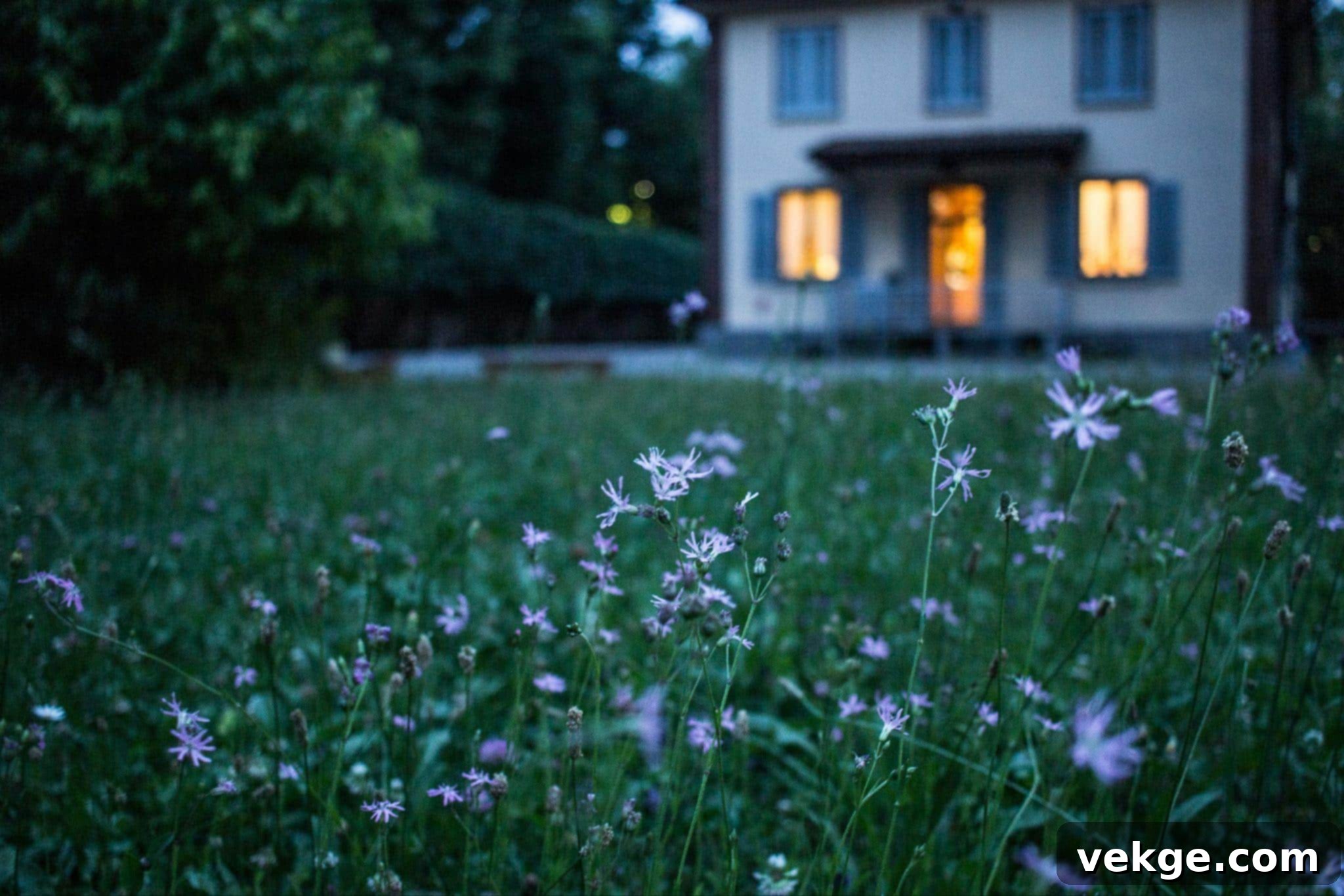The Ultimate Guide to Roof Maintenance: Protecting Your Home Year-Round
As a homeowner, safeguarding your most significant investment—your home—is a continuous endeavor. At the heart of this protection lies your roof, a critical component that shields your property from the elements and contributes significantly to its structural integrity and aesthetic appeal. Regular and proactive home maintenance, particularly focused on your roof, is not just a chore but a smart investment that prevents costly repairs, enhances your living environment, and preserves your home’s value for years to come.
Consistent roof care helps homeowners identify and address minor issues before they escalate into major problems. It also ensures that your home remains a safe, comfortable, and enjoyable space for your family. But what specific steps should you take to keep your roof in excellent condition throughout every season?
This comprehensive guide outlines essential home maintenance tips designed to keep your roof in pristine shape, ensuring your entire property remains in good working order year-round.
Regular Roof Inspections: Your First Line of Defense
The first and most crucial step in effective roof maintenance is conducting regular inspections. This can often be done safely from the ground with binoculars, looking for obvious signs of damage or wear. For a more thorough check, you might need to use a sturdy ladder, but safety must always be your top priority. Ensure you have the right safety equipment and someone to assist you if you choose to climb onto the roof. If you’re uncomfortable with heights or lack proper safety gear, it’s always best to hire a professional.
Alternatively, you can perform an internal check from your attic space. Look for water stains on the underside of the roof deck, signs of mold or mildew, or daylight visible through cracks. Keeping a vigilant eye on your roof allows you to detect any damage that might have occurred due to severe weather, falling debris, or general wear and tear.
While roofs are built to be durable, they don’t last forever. Most asphalt shingle roofs have an average lifespan of 20-30 years, while other materials can last longer. Regularly assess your roof’s age and look for common signs of wear, such as cracked, curling, or missing shingles, granular loss, or sagging areas. These indicators might suggest that a roof replacement is needed in the near future. If you suspect your roof is nearing the end of its life, researching a reputable roofing installation company is a wise next step.
Trim Back Overhanging Trees and Branches
Trees and plants, while beautiful, can pose a significant threat to your roof’s integrity. Branches that hang over or touch your roof can cause damage in several ways. During storms, strong winds can cause these branches to scrape against shingles, wearing away their protective granules and reducing their lifespan. Worse, heavy snowfall or severe winds can snap branches or even entire trees, sending them crashing onto your roof and causing extensive structural damage.
Beyond direct impact, overhanging foliage can also create damp, shaded areas on your roof, encouraging the growth of moss, algae, and lichen. These organisms can trap moisture against your roof’s surface, leading to premature deterioration and rot. Furthermore, tree branches can provide easy access for pests like rodents, squirrels, and insects to enter your attic or home.
To mitigate these risks, it’s essential to regularly trim back any trees or shrubs that are encroaching on your property, especially those close to your roofline. Aim for at least a six-foot clearance between branches and your roof to ensure adequate protection and airflow.
Clean Your Gutters of Debris
Your home’s gutter system is designed to channel rainwater away from your roof and foundation, protecting both. However, gutters frequently accumulate leaves, twigs, dirt, and other debris, especially after storms or during autumn. When gutters become clogged, they can no longer perform their essential function effectively.
Clogged gutters cause water to back up, overflow, and spill directly onto your home’s fascia, siding, and foundation. This constant moisture can lead to wood rot in fascia boards, water penetration into your walls, and even foundation damage over time. In colder climates, backed-up water can freeze, forming ice dams that push water under your shingles, causing leaks and significant interior damage.

It’s recommended to clean your gutters at least twice a year, typically in the spring and fall, or more frequently if you have many trees near your home. Always use a sturdy ladder and exercise caution. If your gutters are difficult to access or you’re uncomfortable doing the work yourself, consider hiring a professional gutter cleaning service.
Perform Regular Visual Checks of Your Home’s Exterior
While your roof is paramount, the overall health of your home’s exterior directly impacts its performance and longevity. A general visual check of your home’s exterior surfaces should be a regular part of your maintenance routine. This includes not just the roof but also the siding, windows, doors, and foundation.
Look for any gaps, cracks, or deterioration in your home’s siding, trim, and flashing around windows and doors. These can be entry points for moisture, pests, and drafts, leading to energy loss and potentially compromising the structural integrity of your home. Even small issues like cracked caulk around windows can lead to water intrusion that eventually affects framing or insulation, indirectly impacting your roof system.
By making a quick walk around your home perhaps once a week or after a significant weather event, you can spot anything amiss. Addressing minor issues like a loose piece of siding or a deteriorating caulk line immediately can prevent them from turning into larger, more expensive problems down the line. Proactive exterior maintenance contributes significantly to your home’s overall resilience and protection from the elements.
Address Any Leaks Swiftly and Effectively
A leak in your roof is perhaps one of the most alarming problems a homeowner can face. Leaks can occur after severe weather or simply due to aging materials and are capable of penetrating even the most robust roofing systems. The moment you spot a leak – whether it’s a drip from the ceiling or a new water stain – immediate action is crucial.
The first step is to contain the water and prevent further spread. Place buckets or towels under the leak. While this addresses the symptom, it’s vital to identify and address the source. Water stains might appear far from the actual entry point on the roof, as water can travel along beams and pipes.
Ignoring a leak, even a small one, can lead to extensive damage, including rotting wood, damaged insulation, electrical hazards, and the growth of hazardous mold and mildew within your walls and attic. Even if a leak appears to have stopped, the moisture can remain, creating ideal conditions for mold. Use fans or dehumidifiers to dry out affected areas thoroughly while you arrange for professional repair.
Promptly addressing leaks is paramount. The longer a leak persists, the more significant and costly the damage will become. Ensure these issues are resolved quickly by a qualified professional to maintain your roof’s protective capabilities against future bad weather.
Hire Professionals for Comprehensive Roof Checks and Repairs
While DIY inspections and minor maintenance are helpful, there’s no substitute for a professional roofing contractor. Experts possess the specialized knowledge, tools, and safety equipment to conduct thorough inspections, accurately diagnose problems, and perform repairs or replacements safely and effectively. Whether it’s an annual check-up to ensure everything is in good working order, or a more urgent repair, professionals offer invaluable peace of mind.
Attempting complex roof repairs yourself can be dangerous and may lead to further damage if not done correctly. Professional roofers can identify subtle issues that an untrained eye might miss, such as compromised flashing, loose seals, or early signs of material fatigue. They can also provide insights into your roof’s remaining lifespan and recommend preventative measures.

It’s advisable to have your roof professionally inspected at least once a year, or at a minimum, every two to three years. Neglecting professional inspections increases the risk of undetected problems escalating and leading to more expensive and extensive repairs down the line.
Ensure Proper Ventilation Throughout Your Property
Effective ventilation is critical not only for your home’s overall comfort and air quality but especially for the health and longevity of your roof. The attic space requires proper airflow to prevent the buildup of heat and moisture, which are detrimental to your roofing system.
Inadequate attic ventilation can lead to a host of problems. During summer, trapped hot air can significantly increase the temperature of your attic, radiating heat into your living spaces and driving up cooling costs. This extreme heat can also prematurely age and warp your roof shingles, reducing their lifespan. In winter, poor ventilation can cause moisture-laden air from your home to condense in the cold attic, leading to dampness, mold, mildew, and wood rot on your roof deck and rafters. It can also contribute to the formation of ice dams, which force melted snow under shingles, causing leaks.
Ensure that your home has adequate ventilation, including functional soffit and ridge vents that allow for continuous airflow through the attic. Beyond structural ventilation, actively ventilate your living spaces by opening windows when cooking, showering, or doing laundry to expel excess moisture, preventing it from migrating into your attic.
Replace or Augment Insulation Where Necessary
Insulation plays a crucial role in maintaining your home’s energy efficiency and protecting your roof. It acts as a barrier, preventing heat from escaping your living space into the attic during winter and keeping excessive heat out during summer. However, insulation doesn’t last indefinitely; its effectiveness can diminish over time due to compression, moisture, or pest damage.
The type and quality of insulation, as well as its original installation, dictate its lifespan. For many homeowners, the existing insulation might be old or insufficient, especially if it was present when they purchased the home. Inadequate insulation leads to significant heat loss, forcing your HVAC system to work harder and increasing energy bills. It also exacerbates attic ventilation issues, contributing to ice dam formation in cold climates by allowing heat to melt snow on the roof, which then refreezes at the eaves.
Regularly inspect your attic insulation for signs of damage, compression, or gaps. Identify areas where insulation might be missing or insufficient, particularly in vital areas that would benefit most from improved thermal performance. Upgrading or replacing old, ineffective insulation can dramatically improve your home’s energy efficiency and contribute to your roof’s longevity by creating a more stable attic environment.
Implement Effective Pest Prevention Strategies
Pests can be a significant problem for homeowners, and your roof and attic offer an enticing, often undisturbed, warm, and dark sanctuary. Rodents, birds, squirrels, and insects can cause substantial damage to your roofing system and the underlying structure of your home.
Squirrels and raccoons can chew through fascia boards and shingles to gain entry, creating holes that compromise your roof’s integrity and allow water penetration. Once inside, pests can damage electrical wiring (a fire hazard), contaminate insulation with droppings, chew through wooden beams, and build nests that block ventilation. Birds can nest in vents, causing blockages and potential fire risks.
To prevent pest infestations, routinely inspect your roof and attic for any potential entry points such as cracks, gaps, or damaged vents, and seal them promptly. Install mesh covers over attic vents and chimney flues. If you notice signs of pest activity, such as droppings, gnaw marks, or strange noises, take immediate action to remove them and prevent their return. This might involve setting traps or calling a professional pest control service to ensure your home and roof remain pest-free.
Inspect and Maintain Your Chimney (Where Applicable)
For homes equipped with a chimney, it’s an integral part of the roof system that often requires specific attention. While many modern homes may not actively use their chimneys for fires, its structural integrity and interaction with the roof remain crucial. The chimney stack, cap, crown, and flashing are all vulnerable points that can lead to significant problems if neglected.
Regularly inspect your chimney for signs of deterioration, such as cracked or missing mortar joints, damaged bricks, or a crumbling chimney crown. The chimney cap prevents water from entering the flue and keeps out animals; ensure it’s securely in place and undamaged. Most critically, inspect the flashing—the metal strips that seal the chimney to the roof. Compromised or loose flashing is a very common source of roof leaks.
It’s advisable to have your chimney inspected annually by a qualified professional, especially if you use your fireplace regularly. A chimney sweep can clean the flue, remove creosote buildup, and inspect all components for wear or damage. Maintaining your chimney properly is essential for safety, preventing leaks, and preserving the overall condition of your roof.
These essential home maintenance tips are vital for keeping your roof in peak condition. By consistently applying these proactive measures, you can ensure your roof continues to provide optimal protection for your home, safeguarding your investment and comfort for many years to come.
